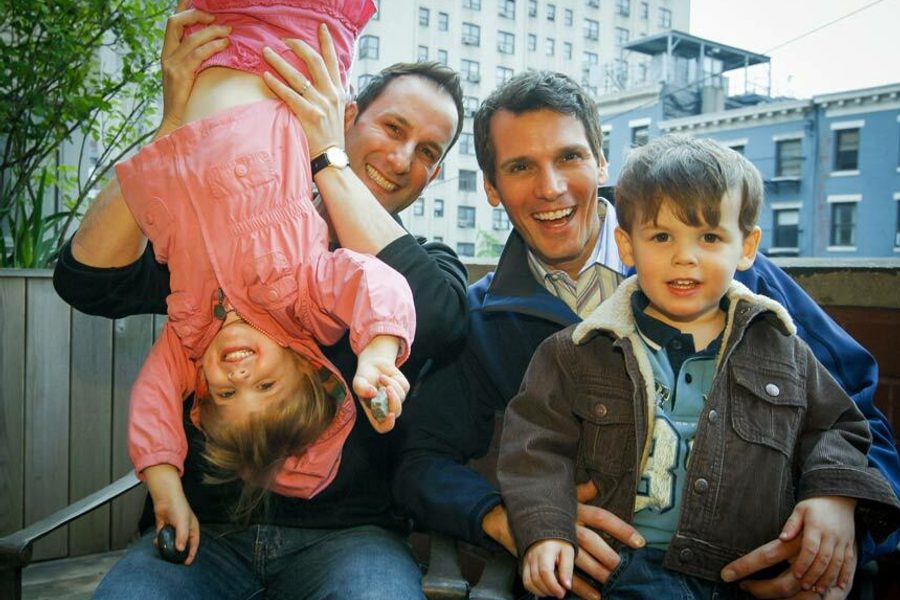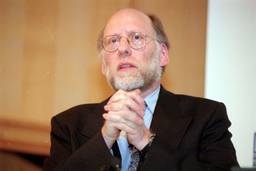How To Make a Baby, Hyperintentionally
Modern Families explores the beauty of unconventional families—and the difficult and sometimes-repellant process of creating them
Susan J. Douglas

As an antidote to the spectacle of the intolerant and self-righteous Kim Davis refusing to validate the marriage licenses of people who love each other, I highly recommend Josh Gamson’s deeply moving and smart new book, Modern Families: Stories of Extraordinary Journeys to Kinship. Gamson, an eminent media sociologist and married gay father of two, follows people who desperately want kids but can’t biologically produce them, as they work to conceive their children and their families. His goal is simple: to destigmatize these families, especially given how much effort and care go into what he calls “hyperintentional” family formation. He also seeks to dramatically expand the term “reproductive freedom” to include the heroic efforts people go to, against barriers and discrimination, to make families.
What is so deft about Modern Families is the ease with which Gamson weaves together individual stories about creating families with academic research about the process, from single parenthood to gay parenting to reproductive technologies.
He begins with the convoluted journey he and his husband took to bring their first daughter into the world. Gamson had, from childhood, always imagined he’d be a dad. When he came to terms with his sexual identity, he assumed that could never happen. Yet he could not let his desire for children go. And so an exploration began. A close female friend did not want children but did want to experience pregnancy. Another woman donated her eggs. Gamson and his husband could provide the sperm. Out of this kinship group came a child.
Gamson is part of a network of pretty amazing people who have created deliberately unconventional families against all odds, and he describes the often heart-wrenching emotional and technological lengths they had to go to. There are moments in all these accounts that will bring you to tears. The stories he tells involve adoption, the use of surrogates and in vitro fertilization. They feature gay and straight and transgender parents as well as single, coupled and multi-parent families. Some entail going halfway around the world to adopt a child, and Gamson is keenly sensitive to the “global stratification system in which the United States remained dominant, always a receiver and not a sender of adoptive children.”
His subjects are alike in one way: They are all apparently middle- to upper-middle-class. Gamson, a sociologist, is quick to emphasize that even though his subjects may have been marginalized because of their sexuality, their class privilege, financial resources and social networks enabled them to create their families in a way that people of lesser means simply cannot. He is also sensitive to the weird, gender-based dynamics at play in a realm where a gay man is seen as deficient because he cannot carry a baby and a woman as privileged because she can — but her reproductive capacity can also be exploited through surrogacy or coercive adoption practices. He writes with palpable discomfort about an egg-donor and surrogacy industry in which men like him are advised to get eggs from smart, blue-eyed college girls and then plant the embryo into the wombs of lower-middle-class women — whose eggs you are advised you don’t want, but whose uteruses you do.
Gamson is a great storyteller, and this matters, because unconventional families need to have compelling origin stories when their children ask, “Where did I come from?” or are asked, “Why don’t you have a mom?” or “Why do you have two?” or “If you don’t have a mom, how did you get born?” Such stories have politics, Gamson reminds us, because they are a direct challenge to the faux “family values” nuclear family discourse, which is actually not the norm anymore, if it ever was.
Two strong themes, often in tension, dominate this inspiring book. One is how expensive, inequitable and at times repellant the whole assisted reproduction industry can be, leading some, like Gamson, to explore and find satisfying (if complicated) workarounds, like friendship-based surrogacy or multi-parent parenting. The other, though, is what this very same industry can make possible: newfound, love-filled families who, in their increased visibility and obvious joy, slowly but surely break down the mean-spirited barriers the likes of Kim Davis want to impose on others who simply want to share and celebrate their love.
Susan J. Douglas is a professor of communications at the University of Michigan and a senior editor at In These Times. She is the author of In Our Prime: How Older Women Are Reinventing the Road Ahead.








